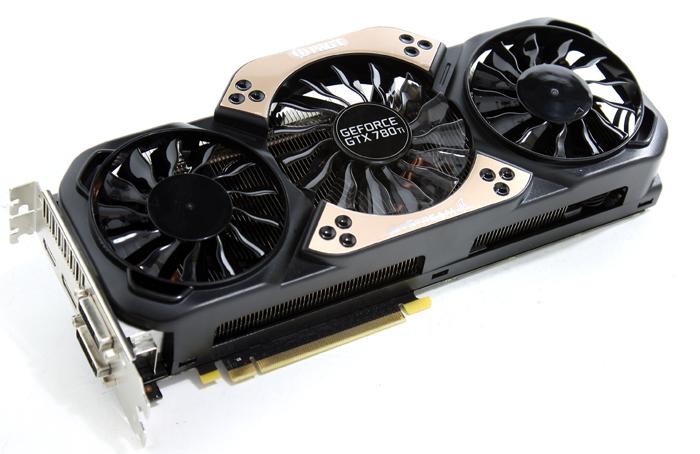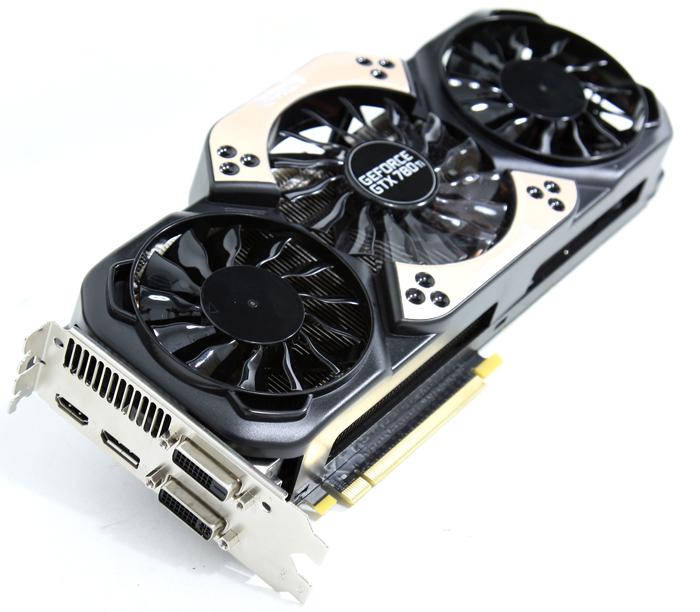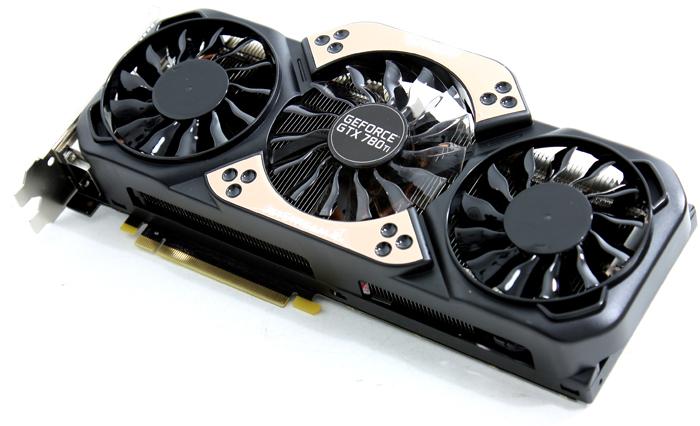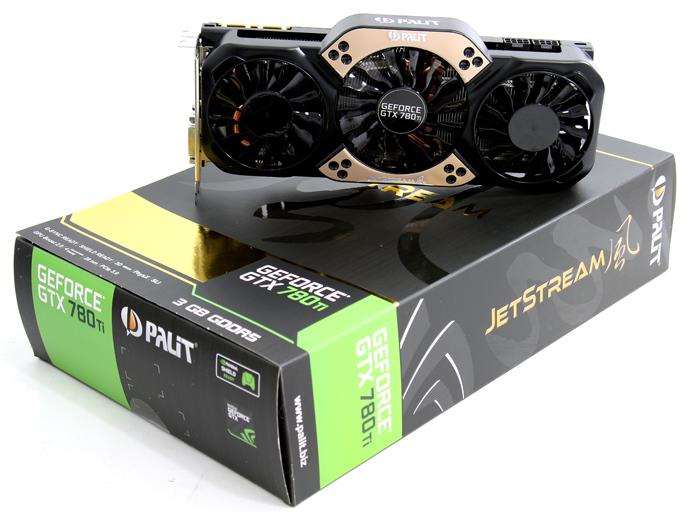Product Showcase
Product Showcase
Let's move onwards to our photo-shoot. Two pages with photo's then and most of it from our own photo-shoot.
But let's say hello to Titan's little brother first, the GeForce GTX 780 Ti from Palit, in a black and beige-gold themed Super JetStream edition. The board is based on a custom 8-phase VRM design with DrMOS technology. The card uses the latest revision cooler, the revised JetStream design cooler, which now has dual 80mm fans and a 90mm fan for pretty good heat dissipation. The cooler really gives overall good temperatures. The aluminum radiator covers the VRM and even memory area. The cooler can dissipate 400 to 450W of heat whilst remaining very silent. As a result, under full load this card manages to stay around 65 degrees C in our testing. The card is 10.5 Inches in length which is like 27 cm for those in that like and reside in the Metric system.
With the GeForce GTX 780 Ti you will receive four display connectors, you'll spot a full size Display port connector, one full size HDMI connector and two DVI connectors (dual-link). You can combine these connectors to setup a surround view (multi-monitor) setup. One card will give you more than sufficient performance to play your games on three monitors.
Palit offers this GeForce GTX 780 Ti JetStream edition 3GB card factory clocked for you and we notice the boost clock at roughly 1100 MHz. And as our article will show later on, there's room for tweaking as we got this puppy running stable over1200 MHz on the boost frequency, which is rather nice for a product with 2880 active shader processors..
Each GeForce GTX 780 Ti will have a maximum power design of 250 Watts, but they are made to a little tweaking as well. The reference cards are using an one 150W 8-pin PEG, and one 75W 6-pin PEG (PCI EXpress Graphics) connector. The Palit version however will come with twi 8-pin headers. Another 75 to 150 Watts is delivered though the PCI slot and thus motherboard. This should be plenty for a decent overclocking session.





